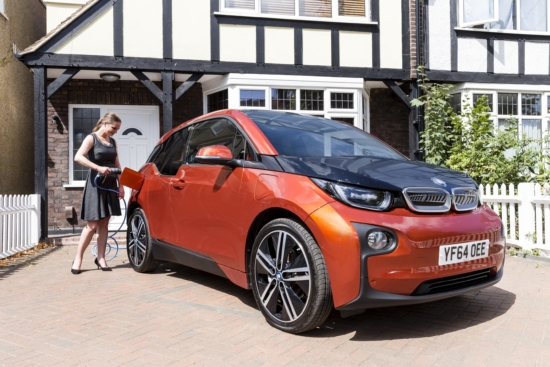EV driver ‘charging anxiety is misconception’ claims consultant

The creation of a robust, reliable, and fit for purpose public charging infrastructure that enjoys the full confidence of EV drivers is central to mainstream adoption of electric cars. Mike Coulton, Volkswagen Financial Services UK EV Consultant believes the UK’s postcode lottery of public chargepoints may be contributing to ’charging anxiety’ among potential EV drivers, but suggests the conundrum of a lack of overall public charge points is a common misconception.
Forecasts outlined by the Competition and Markets Authority (CMA) suggest that up to 480,000 public charging points will be needed across the UK by 2030.
In addition, according to estimates published by the European Commission, every ten electric vehicles on the road require one public charger solution. Therefore, with 460,000 Battery Electric Vehicles (BEVs) currently on the road in the UK, the present availability of 31,000 public chargers, as of April 2022, might appear insufficient.
However, these statistics seem to ignore one vitally important factor: there are also approximately 300,000 home chargepoints installed across the UK, which leaves just 160,000 BEV drivers without a home charger. This vastly reduces the dependency on the public network.
If it’s only the remaining 160,000 BEV drivers that need regular access to public chargers, the 31,000 currently available means the UK has almost double the suggested requirement outlined by the European Commission.
Are there still issues with the UK’s charging infrastructure?
Yes – but it’s not the number of public chargers that is the concern – it is the accessibility, reliability and geography of chargepoints that require attention and investment from both the automotive industry and the Government.
Figures from the Department for Transport up to July 2021 demonstrate that London and the South East benefit from a disproportionately higher number of public charging points per capita when compared with other areas around the UK.
Based on public charging points per 100,000 people, drivers in London and the South East enjoy access to 128 charge points. This is more than Wales (29), Scotland (47) and Northern Ireland (17) combined.
With discussions underway concerning the Government’s levelling up agenda, the North also falls short when compared with the capital and the South East. This fact is demonstrated by figures showing the North West has 22 public charging points per 100,000 people, the North East has 33 and Yorkshire & The Humber just 21.
The current postcode lottery when it comes to accessing a convenient public charging point may also be contributing to a new driver phenomenon – ‘charging anxiety’.
The Volkswagen Financial Services UK data insights team believes ‘range anxiety’ among consumers – when drivers fear electric vehicles wouldn’t travel far enough on a single charge to get them where they needed to go – has now been replaced by ‘charging anxiety’.
This translates into worries that the current public charging infrastructure is not widespread, accessible or reliable enough to alleviate driver uncertainties when they are contemplating longer journeys across the nation.
It’s hoped that the Government’s £450 million Local Electric Vehicle Infrastructure (LEVI) fund, which will fund projects such as EV hubs and on-street charging solutions, will go some way to alleviating the regional disparities, but concerns over a lack of overall public chargepoints are perhaps misplaced.
Moreover, with figures from the Society of Motor Manufacturers & Traders (SMMT) showing that 2021 saw the biggest annual increase in EV registrations with 191,000 BEVs registered, taking the total on UK roads to more than 395,000 – an annual growth of 92 per cent from 2020 – the nationwide roll-out of public chargepoints must keep pace with demand for electric cars.
Mike Coulton said: “We’ve never had more EVs on our roads than we do right now, which is fantastic news, but the challenge is to ensure that the public charging network keeps pace with the rising popularity of electric cars. It’s fair to say that a postcode lottery of public chargepoints exists in the UK and may be contributing to perceived charging anxiety among EV drivers, but significant Government funding coupled with ambitious decarbonisation targets should ensure this problem levels out.
“However, as our research shows, the conundrum of a lack of overall public charge points is a common misconception, as the number of home chargepoints is largely ignored. The focus now should be on making sure that public chargepoints are easily accessible via contactless payment, are reliable and deliver the advertised power (particularly relevant for ultra-rapid chargers), and are evenly spread in sufficient numbers across the UK.”

 Hella
Hella
Comments